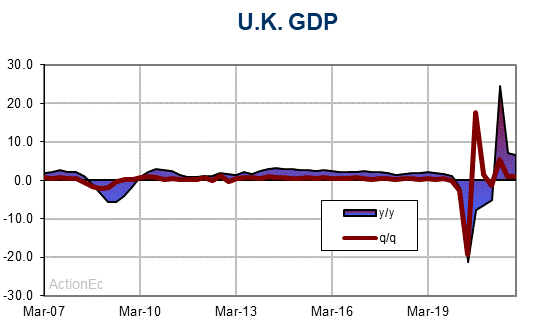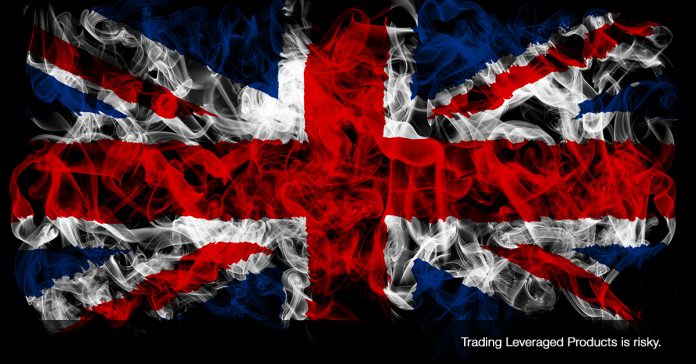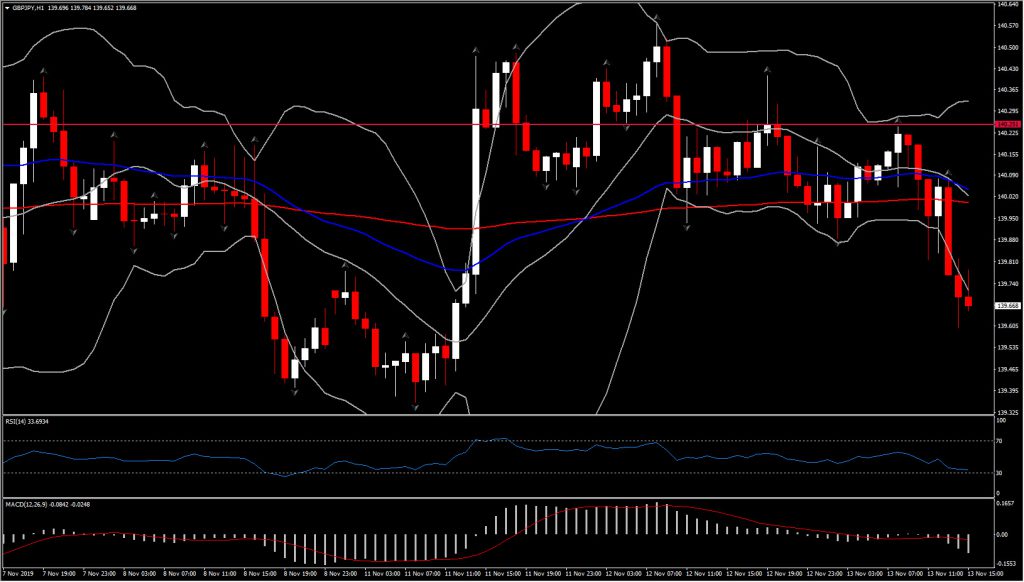Sterling markets were unperturbed by the CPI miss, with both UK yields and the Pound reversing at least most of the declines seen in the immediate wake of the data release.
Cable has since settled around the 1.2850 mark, near net unchanged on the day. The FTSE has slid -0.5%, while the Pound is also near net unchanged levels against the Euro and other currencies, heading into the New York interbank open.
UK October CPI, to recap, missed to the downside, at 1.5% y/y, the lowest rate seen since November 2016 and follows 1.7% in September. The median forecast had been for a decline to 1.6%. The BoE forecast in its November Inflation Report that CPI would dip to a base of 1.2% in Q2 2020, so the weakness in the October figure won’t be much of a surprise to policymakers.
Meanwhile, at the beginning of the week the GDP numbers for Q3 were released and confirmed that the economy escaped a technical recession, as economic activity rebounded and rose 0.3% q/q, after contracting -0.2% q/q in the second quarter of the year. The annual rate fell back to 1.0% y/y from 1.3% y/y. Expectations had been for a rebound to 0.4% q/q, so markets were still left disappointed and despite the apparent strength in the headline numbers, the breakdown indeed continued to point to downside risks.

Statistical effects leave Q4 with a negative bias then especially as investment is unlikely to rebound any time soon amid ongoing uncertainty on the Brexit front. The October 31 no-deal scenario may have been avoided, but even if markets get what they seem to be looking for, i.e. political stability, the chances are that trade will be far from frictionless under the trade deal Boris envisages, even if he manages to get an agreement in place by the end of the transition period, which he insists will remain December 2020.
Hence focus remains on political campaigning in the UK into the December 12 general election. Politico’s poll tracker shows the Conservatives now command 39% support, up 3 points over the last two weeks and up from 28% at the time Johnson took over from Theresa May in late July. With the Brexit Party having backed down, the Conservatives are likely to see their lead strengthen, and they now look well positioned to win the election and return to Parliament with a majority. That in turn implies Brexit being implemented in January.
The main threat to Johnson is a possible coalition between Labour and the LibDems, which currently have a combined support tally of 44%. Tactical pacts between smaller pro-EU parties will also be aiming to counter the pro-Brexit vote.
Click here to access the HotForex Economic calendar.
Andria Pichidi
Market Analyst
Disclaimer: This material is provided as a general marketing communication for information purposes only and does not constitute an independent investment research. Nothing in this communication contains, or should be considered as containing, an investment advice or an investment recommendation or a solicitation for the purpose of buying or selling of any financial instrument. All information provided is gathered from reputable sources and any information containing an indication of past performance is not a guarantee or reliable indicator of future performance. Users acknowledge that any investment in Leveraged Products is characterized by a certain degree of uncertainty and that any investment of this nature involves a high level of risk for which the users are solely responsible and liable. We assume no liability for any loss arising from any investment made based on the information provided in this communication. This communication must not be reproduced or further distributed without our prior written permission.




















